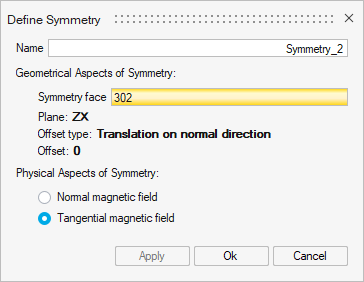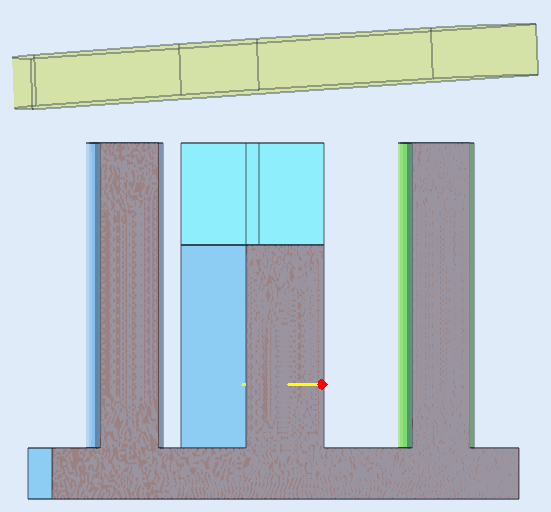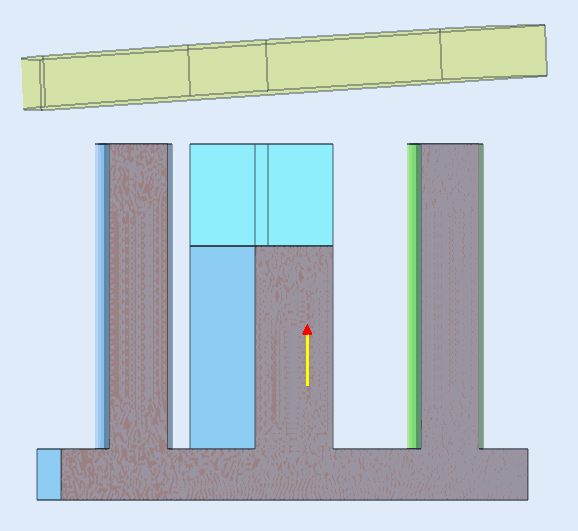Symmetry
![]()
Introduction
Symmetry boundary conditions are used when the physical geometry of interest is symmetric. By applying the symmetry boundary condition, we can reduce the model size, thereby reducing the computation time.
If your device is symmetric, you can define a Symmetry.
The Symmetry allows you to create a symmetry (geometrical and physical aspects).
Symmetry conditions on boundaries
When a device has symmetry planes, it is possible to represent a fraction of the device, and to set appropriate symmetry conditions on the symmetry planes.
From a physical point of view, the symmetry boundary conditions are set on the state variable (potential).
| Tangential Symmetry condition (or symmetry) | Normal Symmetry condition (or anti-symmetry) |
|---|---|
 |

|
Symmetry and infinite box
It is possible to combine infinite box and symmetries. In this case, the geometry of the infinite box (points and lines) automatically follows the symmetries attached to the study domain.
The examples of the infinite box geometry for the study domain with no symmetry and with the symmetries are presented in the table below.
| No symmetry | Symmetry |
|---|---|

|
 |
| Complete infinite box of parallelepiped type | A quarter of the infinite box of parallelepiped type for three symmetries versus XY plane, YZ plane and ZX plane |
Dialog Box

- Geometrical Aspects of Symmetry
- Symmetry face: select a planar face is mandatory to define the plane of symmetry.
- "read only" information:
- Plane: the reference plane to apply the offset type and offset and define the position of the symmetry plane;
- Offset type
- Translation on normal direction: if the symmetry plane is a vector translation of the reference plane.
- Rotation around first axis: if the symmetry plane is a rotation around an axis of the reference plane.
Warning: The symmetry plane can’t be any plane in the space. It must be defined either by a translation or a rotation of a predefined plane (XY or YZ or ZX plane). - Offset:
- Distance for a translation
- Angle for a rotation
Note: these "read only" informations are updated if the device is moved.
- Physical Aspects of Symmetry
This option is necessary to define the direction of the magnetic field near the plane of symmetry.
Normal magnetic field Tangential magnetic field 

Specificity with Mesh Import
In the case of the description model is done by a Mesh Import via , (if you should add symmetry and/or periodicity) it is mandatory to do on the solution bodies in order to assign the topology information on the faces. This allows then to select faces for symmetries or periodicity.
Advices
- Delete the volume mesh (if the bodies of the solution are meshed)
- Select bodies in the Model Browser
- right click
- choose Delete Solid Elements
- Use the Break function to cut the device where it is necessary
- Remove the unnecessary parts
- select the bodies
- right click
- choose Delete
- Redo Surface Mesh (to ensure a clean surface mesh)
- Redo Tet Mesh
- Edit Solution and re-assign the bodies in the solution